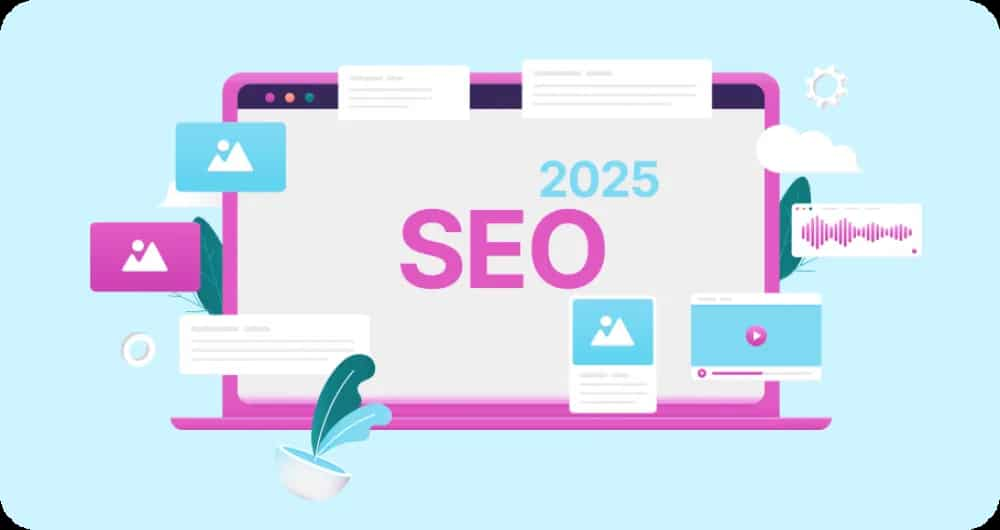Search engine optimization remains the cornerstone of driving organic blog traffic, but the landscape has evolved significantly. To succeed in 2025, you must adapt to new algorithm priorities while reinforcing time-tested best practices. Below is a comprehensive guide covering the key changes and enduring strategies for maximizing blog visibility and engagement.
What Has Changed
1. AI-Driven Search and Generative SERPs
– Search engines increasingly use large language models to generate instant answers and narrative snippets directly in the results page.
– Implication: Blogs must optimize for featured snippets and answer boxes by providing concise, structured answers to user queries.
2. Core Web Vitals & Page Experience
– Google’s page experience signals now weigh heavily on rankings.
– Metrics Matter: Largest Contentful Paint (LCP) under 2.5s, First Input Delay (FID) under 100ms, and Cumulative Layout Shift (CLS) under 0.1.
– Action: Prioritize fast hosting, image optimization (WebP, lazy loading), and minimal JavaScript.
3. Mobile-First Indexing Matured
– Google exclusively uses the mobile version of content for indexing and ranking.
– Responsive Design: Ensure fluid layouts, readable fonts, and touch-friendly navigation on smaller screens.
4. Enhanced E-A-T (Expertise, Authoritativeness, Trustworthiness)
– Search quality raters focus on content depth, author credentials, site reputation, and transparent sourcing.
– Trust Signals: Author bios, external references, up-to-date content, and user reviews boost perceived authority.
5. Semantic Search & Intent Matching
– Search engines better interpret user intent and context, rewarding content that addresses underlying needs rather than exact keywords.
– Topic Clusters: Create pillar pages and interlinked subtopics to demonstrate comprehensive coverage and guide semantic relevance.
6. Voice & Visual Search Optimization
– Smart speakers and visual search (Google Lens) usage continues to grow.
– Natural Language Queries: Optimize for question-based long-tail phrases.
– Image SEO: Use descriptive alt text, structured data for images, and high-quality visuals to appear in visual search results.
7. Structured Data & Rich Results
– Expanding rich result types include FAQ snippets, How-To guides, and Recipe cards.
– Implementation: Apply JSON-LD schema markup to relevant sections to qualify for enhanced SERP features.
8. Core Algorithm Updates Focused on Misinformation
– Recent updates devalue low-quality, spammy, or misleading content.
– Accuracy & Currency: Regularly audit and refresh posts to maintain factual correctness and relevance.
What Still Works
1. High-Quality, In-Depth Content
– Long-form, well-researched articles (2,000+ words) continue to outperform thin content.
– Value-Driven: Focus on solving specific reader problems with actionable insights and clear takeaways.
2. Keyword Research & Strategic Targeting
– Foundational keyword analysis remains critical.
– Balance: Combine high-volume head terms with long-tail opportunities that signal strong purchase or engagement intent.
3. Internal Linking & Site Architecture
– Logical site structure and thoughtful internal links distribute “link equity” and help crawlers discover content.
– Hierarchy: Organize content into topic clusters with a clear pillar page linking to detailed subtopics.
4. Backlink Building Through Outreach & Relationships
– High-quality backlinks from authoritative sites remain one of the top ranking factors.
– Tactics: Guest posting on industry blogs, creating link-worthy resources (studies, infographics), and digital PR campaigns.
5. User Engagement Metrics
– Time on page, pages per session, and low bounce rates correlate with stronger rankings.
– Engagement Boosters: Use multimedia (videos, interactive charts), clear subheadings, and compelling visuals to keep readers engaged.
6. Regular Content Updates & Evergreen Maintenance
– Refreshing statistics, updating examples, and improving readability signal content freshness.
– Schedule: Audit cornerstone posts quarterly and update secondary articles semi-annually.
7. Mobile Optimization Beyond Responsiveness
– Beyond being mobile-friendly, ensure site navigation is intuitive, content is scannable, and CTAs are prominent on mobile interfaces.
8. Ethical SEO Practices
– Avoid black-hat tactics like keyword stuffing, cloaking, or private blog networks.
– Long-Term Focus: Build sustainable authority through transparent, value-first methods.
Strategic SEO Roadmap for 2025
- Technical Audit & Performance Optimization
– Address Core Web Vitals, mobile usability, HTTPS, sitemap accuracy, and crawl errors. - Content & Keyword Strategy Revision
– Update keyword research using AI-enhanced tools.
– Develop topic clusters aligned with user intent and business goals. - Structured Data Expansion
– Implement or refine schema markup for articles, FAQs, How-To guides, and video content. - E-A-T Enhancement
– Introduce detailed author bios, source citations, and secure site credentials.
– Encourage expert contributions, peer reviews, and positive user feedback. - Rich Media & Engagement Features
– Integrate videos, infographics, podcasts, and interactive modules to increase dwell time. - Backlink & Digital PR Program
– Identify high-authority targets, pitch data-driven stories, and leverage industry partnerships. - Voice & Visual Search Readiness
– Optimize content for question-based queries and ensure images are tagged semantically. - Continuous Monitoring & Iteration
– Track performance via Google Search Console, Core Web Vitals report, and user analytics.
– Adapt strategies based on data insights, algorithm changes, and emerging trends.
By blending these enduring SEO fundamentals with a proactive approach to AI-driven search evolution, page experience priorities, and semantic intent optimization, blogs can not only preserve but amplify their organic traffic in 2025 and beyond. The future belongs to platforms that deliver authoritative, engaging, and technically sound content that aligns seamlessly with user needs and search engine expectations.
